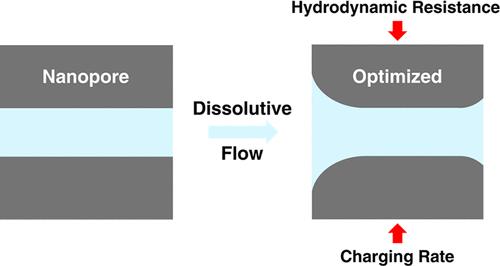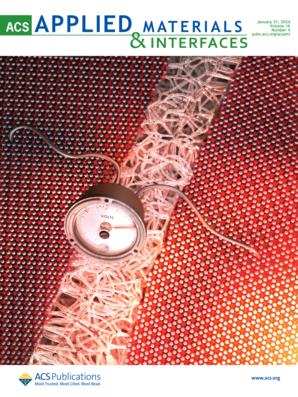Shape Optimization of Nanopores by Dissolutive Flow
IF 8.3
2区 材料科学
Q1 MATERIALS SCIENCE, MULTIDISCIPLINARY
引用次数: 0
Abstract
Nanopores are ubiquitous across disciplines, ranging from bioscience to energy science. Enhancing their transport properties and energy storage capability is crucial to improving functionality. Dissolutive flow, which involves the removal of geometrical obstructions, can transform solid structures into shapes that are less obstructive. In this study, we utilized molecular dynamics simulations to optimize the shape of nanopores through a dissolution-based approach, resulting in optimized inlet and outlet configurations. Furthermore, we examined the distribution of pressure and stress to elucidate the mechanisms underlying shape evolution and edge effects. Conventional inlets impede liquid flow due to high pressure at the apex, a phenomenon we refer to as the reservoir pattern. As dissolution progresses, the apex pressure is significantly reduced over time, allowing a transition to the sliding pattern. By manipulating the dissolubility, wall velocity, and nanopore length, the optimized shape can be fine-tuned. Experiments conducted at the microscale confirmed the emergence of analogous optimized shapes. Additionally, we investigated the transport properties and energy storage capability of various nanopores using molecular dynamics simulations, demonstrating that the optimized nanopore can significantly reduce the hydrodynamic resistance and accelerate the charging rate. This research offers theoretical insights into nanopore dissolution and presents a viable strategy for the practical fabrication of optimized nanopores.

求助全文
约1分钟内获得全文
求助全文
来源期刊

ACS Applied Materials & Interfaces
工程技术-材料科学:综合
CiteScore
16.00
自引率
6.30%
发文量
4978
审稿时长
1.8 months
期刊介绍:
ACS Applied Materials & Interfaces is a leading interdisciplinary journal that brings together chemists, engineers, physicists, and biologists to explore the development and utilization of newly-discovered materials and interfacial processes for specific applications. Our journal has experienced remarkable growth since its establishment in 2009, both in terms of the number of articles published and the impact of the research showcased. We are proud to foster a truly global community, with the majority of published articles originating from outside the United States, reflecting the rapid growth of applied research worldwide.
 求助内容:
求助内容: 应助结果提醒方式:
应助结果提醒方式:


